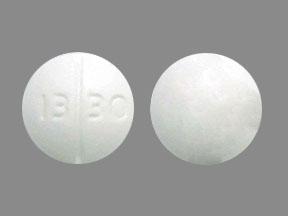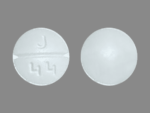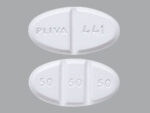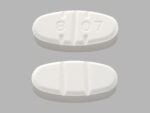Trazodone is frequently prescribed off-label for the treatment of insomnia, despite being developed and approved primarily as an antidepressant. Its use for insomnia has gained popularity due to its sedative properties, relatively favorable safety profile, and non-addictive nature, especially compared to traditional sleep medications like benzodiazepines.
Insomnia is a common sleep disorder. With insomnia, you may have trouble falling asleep, staying asleep, or getting good quality sleep. This happens even if you have the time and the right environment to sleep well. Insomnia can get in the way of your daily activities and may make you feel sleepy during the day

Why Trazodone is Used for Insomnia
Trazodone has sedative effects, which make it an effective option for people who struggle to fall asleep or stay asleep. It is often used for insomnia in cases where:
- Chronic Insomnia: When sleep issues are long-term and may be associated with depression or anxiety.
- Secondary Insomnia: Sleep disturbances that arise due to other health conditions such as pain, anxiety, or depression.
- Insomnia Linked to Depression or Anxiety: Trazodone is particularly helpful in individuals whose insomnia is related to underlying mood disorders.
Mechanism of Action
The effectiveness of Trazodone in treating insomnia lies in its ability to alter brain chemistry in several ways:
- Serotonin Modulation:
- Trazodone inhibits the reuptake of serotonin, increasing serotonin levels in the brain. Serotonin is a neurotransmitter that plays a key role in regulating mood, sleep, and anxiety.
- Though this mechanism is critical at higher doses for treating depression, it contributes less to the sedative effects used in insomnia treatment.
- Histamine Receptor Blockade:
- Trazodone acts as an antagonist at histamine H1 receptors, which are involved in regulating the sleep-wake cycle. Blocking these receptors causes sedation and drowsiness, helping people fall asleep more easily.
- Alpha-1 Adrenergic Receptor Antagonism:
- Trazodone also blocks alpha-1 adrenergic receptors, which are involved in the regulation of blood pressure and arousal. By blocking these receptors, Trazodone reduces alertness and anxiety, promoting relaxation and making it easier to sleep.
- Other Neurotransmitter Systems:
- Trazodone has mild effects on other neurotransmitter systems that may contribute to its calming and sleep-inducing properties. These include dopamine and norepinephrine pathways, although their roles are less significant than those of serotonin and histamine.
Dosage for Insomnia
When used off-label for insomnia, Trazodone is typically prescribed at low doses that are much lower than those used to treat depression. Typical dosages range from:
- 25 mg to 100 mg per night (common range).
- Higher doses (150 mg or more) are generally reserved for patients with co-occurring depression or anxiety.
The sedative effects are most potent at these lower doses, while higher doses shift the drug’s action toward its antidepressant effects.

How Trazodone Compares to Other Sleep Aids
Trazodone is often chosen over other sleep medications for several reasons:
- Lower Risk of Dependence: Unlike benzodiazepines and certain “Z-drugs” like zolpidem (Ambien), Trazodone is not addictive. This makes it a safer long-term option for those with chronic insomnia.
- Less Tolerance: Unlike some sedative medications, Trazodone does not typically lead to tolerance, where the patient would need increasing doses to achieve the same sleep-promoting effects.
- Non-Controlled Substance: Trazodone is not a controlled substance, making it easier to prescribe and less strictly regulated than medications like benzodiazepines or hypnotics.
- Effect on Sleep Architecture:
- Trazodone is known to improve sleep quality by increasing deep (slow-wave) sleep, which is critical for restorative rest.
- It also reduces the time it takes to fall asleep (sleep latency) and improves overall sleep continuity by reducing the number of awakenings during the night.
- Co-treatment of Mood Disorders: Since Trazodone also has antidepressant and anti-anxiety effects, it’s a good option for people whose insomnia is caused or worsened by these conditions. Unlike some other sedative-hypnotic drugs, Trazodone can help address the root causes of insomnia related to mood disturbances.
Common Side Effects
Though effective for insomnia, Trazodone has several side effects that users should be aware of, especially at the higher end of the dose spectrum or in sensitive populations (e.g., elderly individuals).
- Drowsiness: The most common effect, and generally desirable in those using it for insomnia, though it can persist into the next day as residual sleepiness, especially at higher doses.
- Dizziness: Due to its effect on blood pressure (alpha-1 adrenergic blockade), Trazodone can cause dizziness or light-headedness, particularly upon standing up (orthostatic hypotension).
- Dry Mouth: Anticholinergic effects can lead to dry mouth, which is fairly common in Trazodone users.
- Headache: Some individuals experience headaches, especially when they first start taking the medication or if they increase the dose.
- Nightmares or Vivid Dreams: While Trazodone is helpful in promoting deep sleep, some users report unusually vivid or disturbing dreams.
- Morning Grogginess: A “hangover effect” is possible if the sedative properties of the drug extend into the waking hours. This is more likely with higher doses or if the user doesn’t get enough sleep (e.g., less than 7-8 hours).
Safety Concerns and Precautions
- Orthostatic Hypotension: Elderly patients are particularly at risk for falls due to dizziness caused by orthostatic hypotension. Care should be taken in this population, especially in individuals with cardiovascular conditions.
- Cognitive Impairment: Sedation can impair concentration, memory, and coordination, particularly in older adults.
- Priapism: Though rare, Trazodone can cause priapism, a painful, prolonged erection that requires immediate medical attention.
- Drug Interactions: Trazodone can interact with other medications, particularly other antidepressants, antipsychotics, or drugs that affect serotonin levels, potentially leading to serotonin syndrome, a dangerous condition characterized by excessive serotonin activity.
Long-term Use and Efficacy
Trazodone is often seen as a viable option for long-term treatment of insomnia, particularly in individuals who have co-occurring depression or anxiety. Unlike some traditional sleep aids, Trazodone can be used chronically without the risk of dependence or the development of tolerance. However, its effectiveness for insomnia tends to be most significant in the short to medium term (weeks to a few months), and some patients may experience diminishing efficacy over time.
Regular monitoring by a healthcare provider is important, as long-term use can come with side effects that need to be managed or adjusted. Some patients may transition to cognitive behavioral therapy for insomnia (CBT-I), which is considered the gold standard for long-term insomnia management.
In Summary
Trazodone is a commonly used off-label treatment for insomnia, especially in individuals with co-occurring depression or anxiety. It is favored for its sedative properties, non-addictive nature, and ability to improve sleep quality. However, it must be used carefully to avoid side effects like morning grogginess, dizziness, and, in rare cases, more serious complications like priapism or serotonin syndrome. Regular medical supervision is recommended for those using Trazodone for long-term insomnia treatment.
Pain Medications, Pain Relief, and Pain Management




